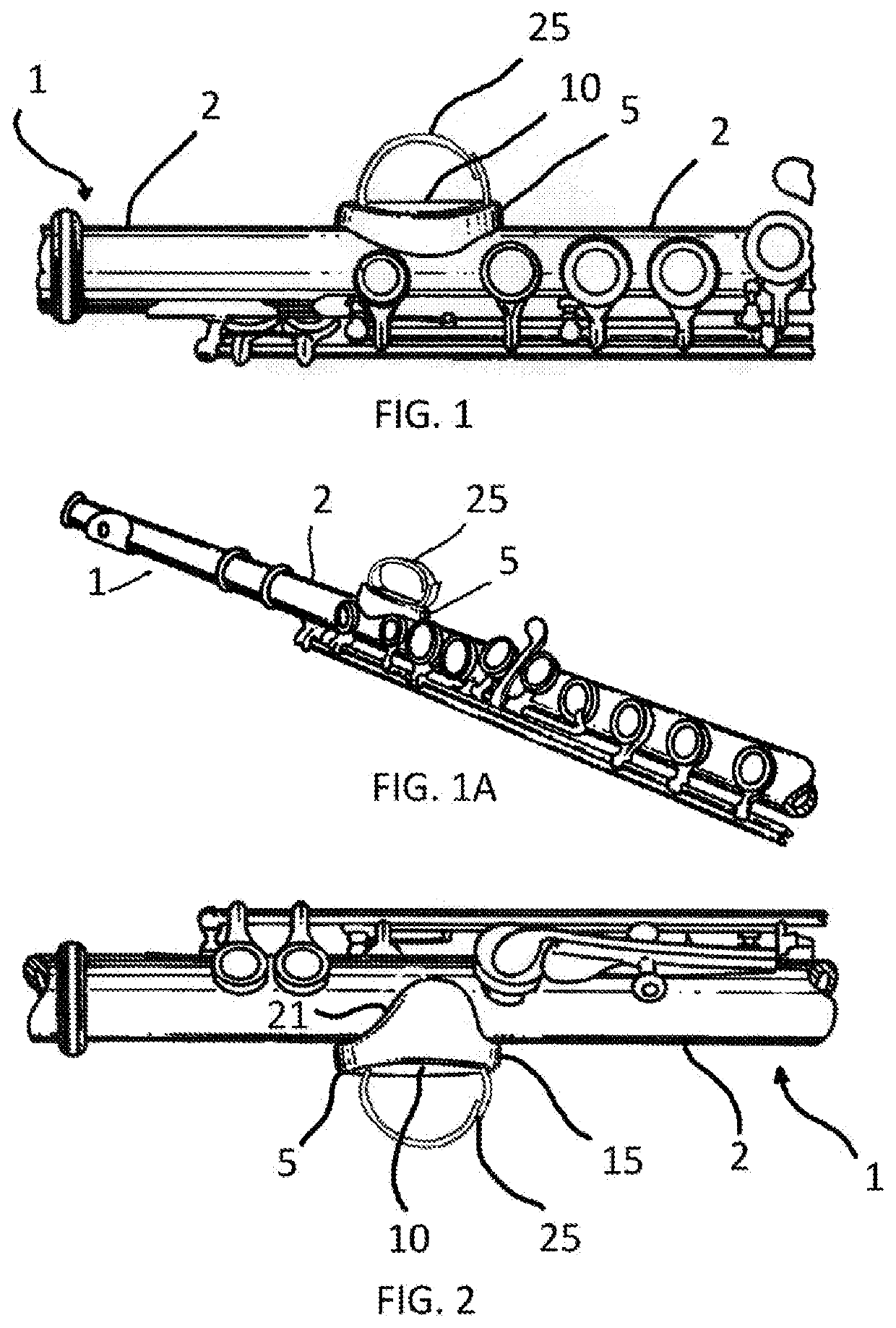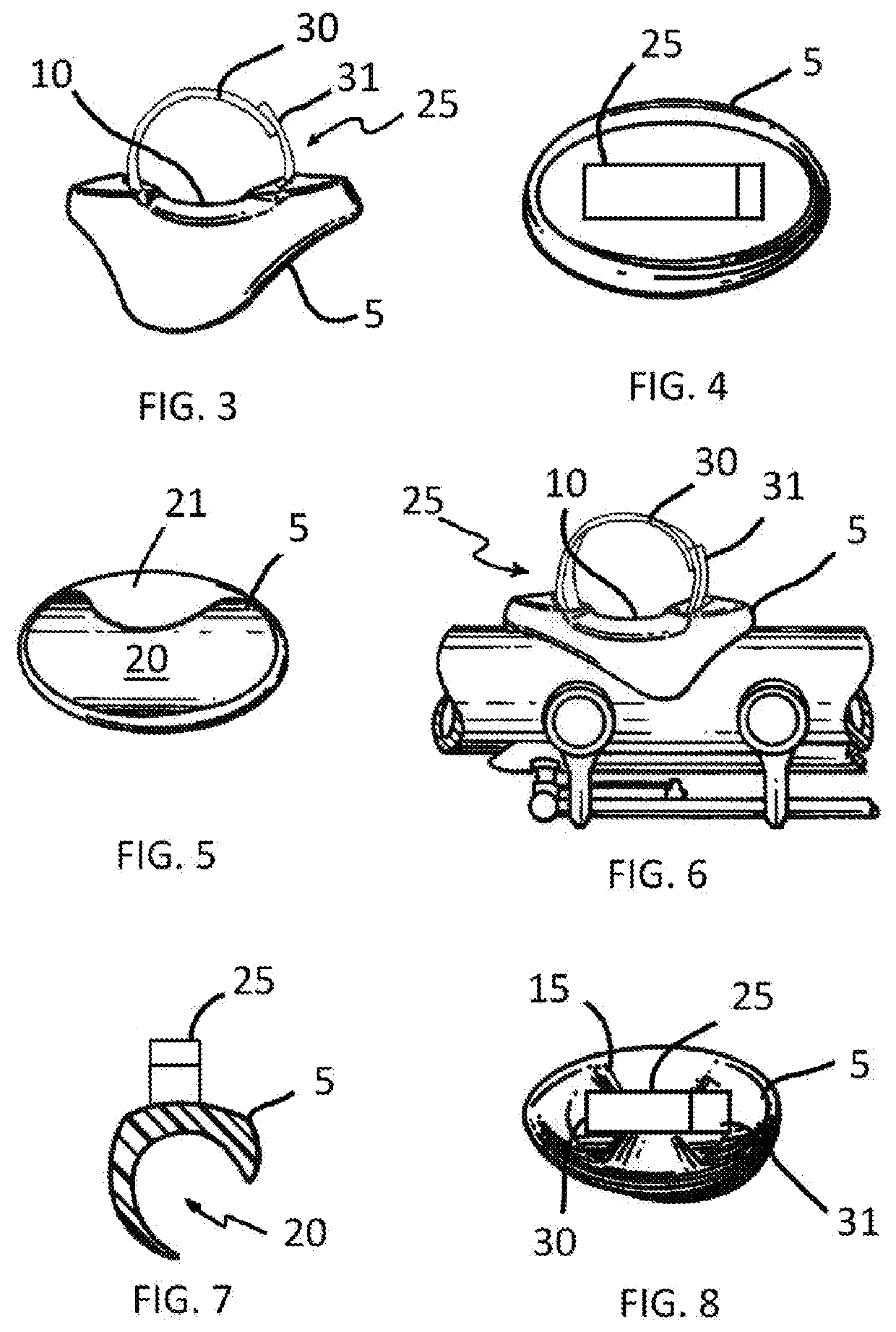Finger Connecting Flute Attachment with Finger Rest Pad
a technology of finger rest and finger, which is applied in the direction of flutes/fifes, instruments, musical supports, etc., can solve the problems of inability to properly control and operate the musical instrument with hands and fingers, affecting the stability of the flute, and innate roll
- Summary
- Abstract
- Description
- Claims
- Application Information
AI Technical Summary
Benefits of technology
Problems solved by technology
Method used
Image
Examples
Embodiment Construction
[0043]A left index finger flute-finger connector, 25, and spacer clamp or clip attachment, 5, is shown in FIGS. 1 and 2, comprising easily removable resilient lobes for attachment to the flute, in position on the round tubular body, 2, of a standard flute 1. Plan views of the finger rest and spacer clip, 5, from the side, above, and below separated from the flute are shown in FIGS. 3, 4, and 5. The spacer clip, 5, is formed with a smooth, or ergonomically shaped, finger rest surface, 10. The spacer, spacer element or spacer portion, 5, displaces or offsets the finger rest surface, 10, from the round tubular flute body 2 for more favorable positioning of the left hand, and left wrist and the flute-finger connecting ring, 25, allows the flute player to better stabilize the flute without impeding its operation in any way.
[0044]Referring to FIGS. 4-7, the spacer clip attachment grasps the tubular body of the flute by means of an open circular arc, 20, greater than a half circle formed o...
PUM
 Login to View More
Login to View More Abstract
Description
Claims
Application Information
 Login to View More
Login to View More - R&D
- Intellectual Property
- Life Sciences
- Materials
- Tech Scout
- Unparalleled Data Quality
- Higher Quality Content
- 60% Fewer Hallucinations
Browse by: Latest US Patents, China's latest patents, Technical Efficacy Thesaurus, Application Domain, Technology Topic, Popular Technical Reports.
© 2025 PatSnap. All rights reserved.Legal|Privacy policy|Modern Slavery Act Transparency Statement|Sitemap|About US| Contact US: help@patsnap.com



